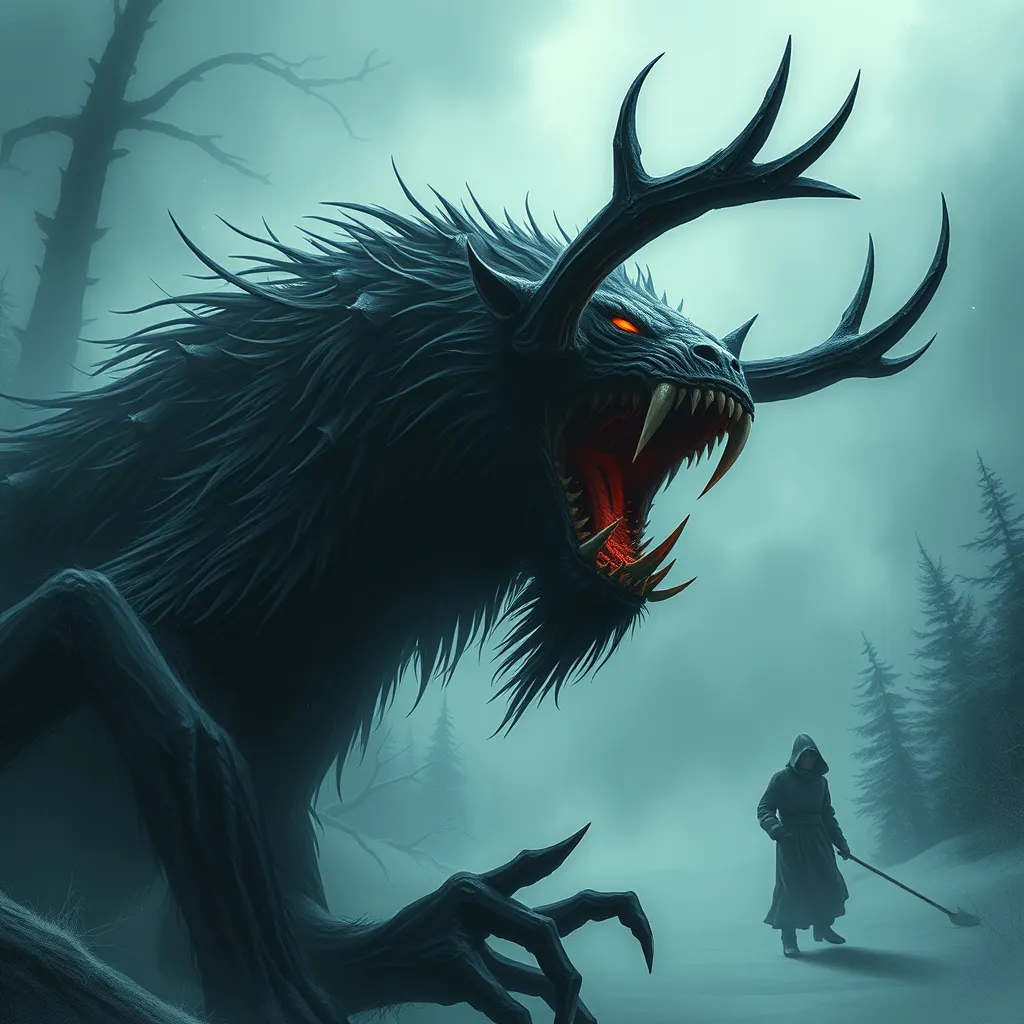The Wendigo’s Hunger: A Deep Dive into Algonquin Myth and Folklore
I. Introduction
The Wendigo is one of the most compelling and frightening figures in Algonquin mythology, embodying the fears and moral dilemmas faced by the Indigenous peoples of North America. This mythical creature is often interpreted as a spirit associated with winter, starvation, and greed, serving as a cautionary tale against the dangers of overconsumption and moral decay.
In Algonquin culture, the Wendigo holds significant importance, representing not just a physical threat but also a deeper psychological and spiritual warning. This article aims to explore the origins, characteristics, and contemporary interpretations of the Wendigo legend, as well as its implications for understanding greed, isolation, and mental health.
II. Origins of the Wendigo Legend
The legend of the Wendigo has its roots in the historical context of Algonquin tribes, primarily found in the northeastern regions of North America. These tribes, including the Algonquin, Ojibwe, and Cree, have long shared similar stories and beliefs about the Wendigo.
Early accounts of the Wendigo emerged from oral traditions, where stories were passed down through generations. These tales often depicted the Wendigo as a once-human entity that succumbed to the insatiable hunger for human flesh, a transformation brought about by extreme starvation or greed.
Over time, the Wendigo myth evolved, adapting to the changing cultural landscape and the experiences of the tribes. The creature’s characteristics and the moral lessons associated with it have transformed, reflecting societal issues and fears relevant to different eras.
III. Characteristics of the Wendigo
The Wendigo is often described as a towering figure, sometimes reaching over fifteen feet tall, with an emaciated body that reflects its insatiable hunger. Its skin is often depicted as ash gray, stretched tightly over its bones, giving it a ghastly appearance. The Wendigo’s eyes are said to glow with a malevolent light, and its breath is hot and rancid, evoking fear in those who encounter it.
- Physical Descriptions: Variations of the Wendigo exist across different tribes, but common features include:
- Gaunt, skeletal body
- Long, sharp claws
- Hairless, decaying skin
- Supernatural strength
Symbolically, the Wendigo represents the destructive nature of greed and consumption, serving as a reminder of the importance of balance and respect for nature. Psychologically, the concept of hunger associated with the Wendigo can be seen as a metaphor for insatiable desires that lead individuals to lose their humanity.
IV. The Wendigo as a Metaphor
The Wendigo legend extends beyond the physical realm, functioning as a powerful metaphor for various themes in society. The creature’s insatiable hunger is emblematic of greed and the consequences of overconsumption.
- Representations of Greed: The Wendigo is often interpreted as a cautionary figure warning against the dangers of unchecked desire for wealth and power.
- Themes of Isolation: The transformation into a Wendigo often involves isolation, reflecting the moral decay that can come from detachment from community and humanity.
- Environmental Concerns: In contemporary discussions, the Wendigo has been linked to environmental degradation, symbolizing humanity’s rapacious consumption of natural resources.
V. The Wendigo in Popular Culture
The Wendigo has made numerous appearances in literature and film, becoming a staple of modern horror. Its haunting image and chilling backstory have inspired countless adaptations, often focusing on themes of survival, cannibalism, and psychological terror.
- Influence on Modern Horror: The Wendigo has influenced various horror genres, spawning characters that reflect its traits, including insatiable hunger and moral corruption.
- Literary Appearances: The Wendigo appears in works by authors such as Algernon Blackwood and Stephen King, where it is used to explore human fears and the darker sides of nature.
- Comparison with Other Folkloric Creatures: Similar to other folkloric beings, like vampires or werewolves, the Wendigo embodies primal fears but is uniquely tied to themes of hunger and consumption.
VI. Contemporary Interpretations of the Wendigo
In modern indigenous storytelling, the Wendigo remains a relevant figure, often adapted to address current issues faced by Indigenous communities. This revitalization of the myth serves to strengthen cultural identity and provide a framework for understanding contemporary challenges.
Academically, the Wendigo is examined through various lenses, including psychology, sociology, and environmental studies. Scholars emphasize the myth’s ongoing relevance in discussions about human behavior, societal norms, and environmental ethics.
VII. The Wendigo and Mental Health
The intersection between folklore and mental health is a fascinating area of study. The Wendigo myth has been linked to psychological conditions, particularly in contexts of cannibalism and societal responses to mental illness.
- Connections to Psychological Conditions: The Wendigo’s hunger can be interpreted as a metaphor for certain psychological disorders, such as anorexia or binge eating, illustrating the complex relationship between folklore and mental health.
- Historical Instances of Cannibalism: Historical accounts of cannibalism, often linked to desperation, have led to societal stigmas, with folklore like the Wendigo providing a cultural narrative to explain these behaviors.
- Role of Fear and Stigma: The fear surrounding the Wendigo can contribute to a stigma around mental health issues, revealing the need for understanding and empathy in addressing these challenges.
VIII. Conclusion
In summary, the Wendigo serves as a rich and multifaceted symbol within Algonquin folklore, embodying themes of greed, isolation, and the consequences of humanity’s relationship with nature. Its legacy continues to resonate in contemporary culture, reflecting ongoing concerns about consumption, identity, and mental health.
The Wendigo’s story invites further exploration into Algonquin mythology and reminds us of the importance of understanding cultural narratives that shape our perspectives on morality and humanity. Through this exploration, we gain insights not only into Indigenous cultures but also into the universal themes that connect us all.




